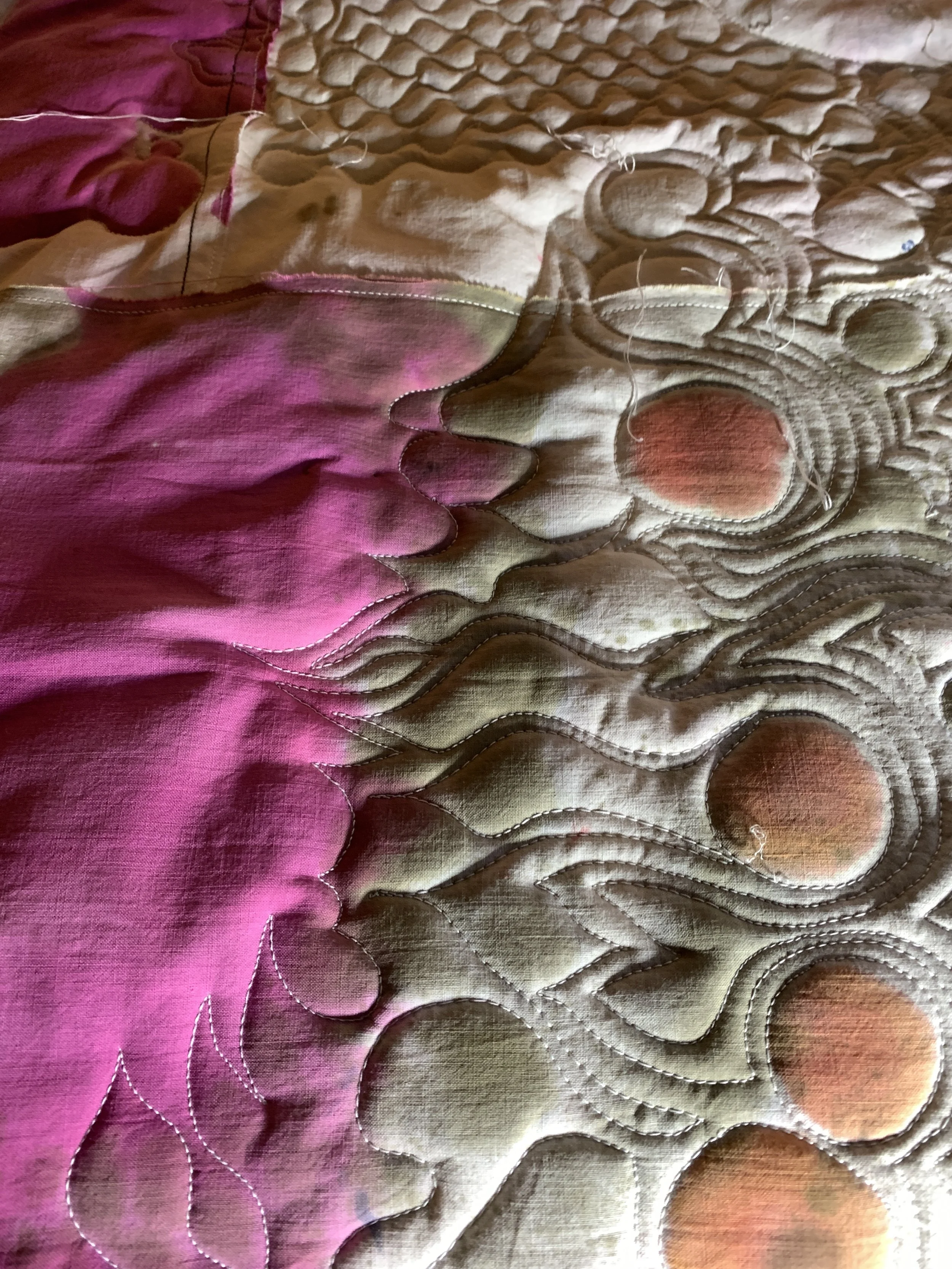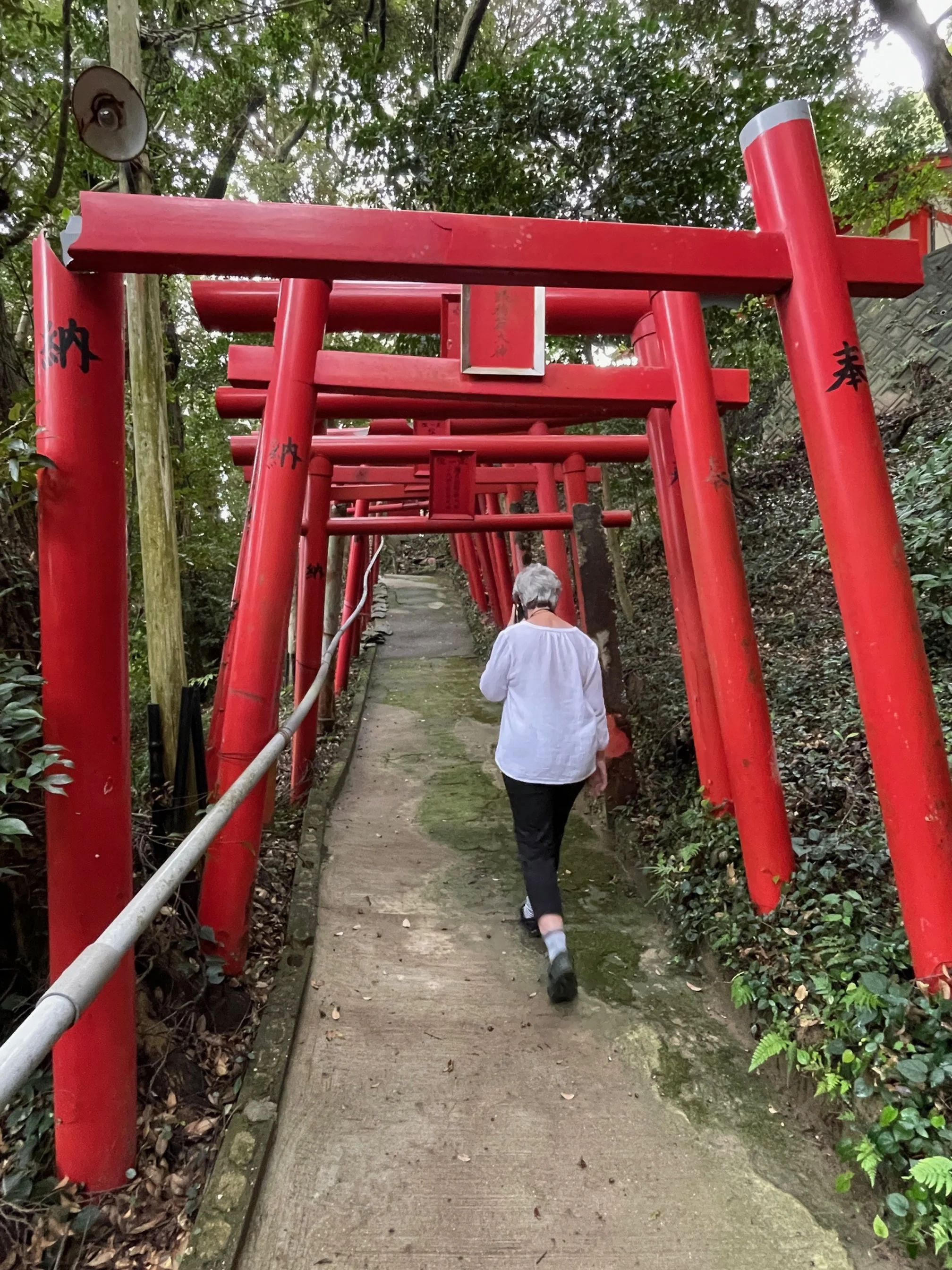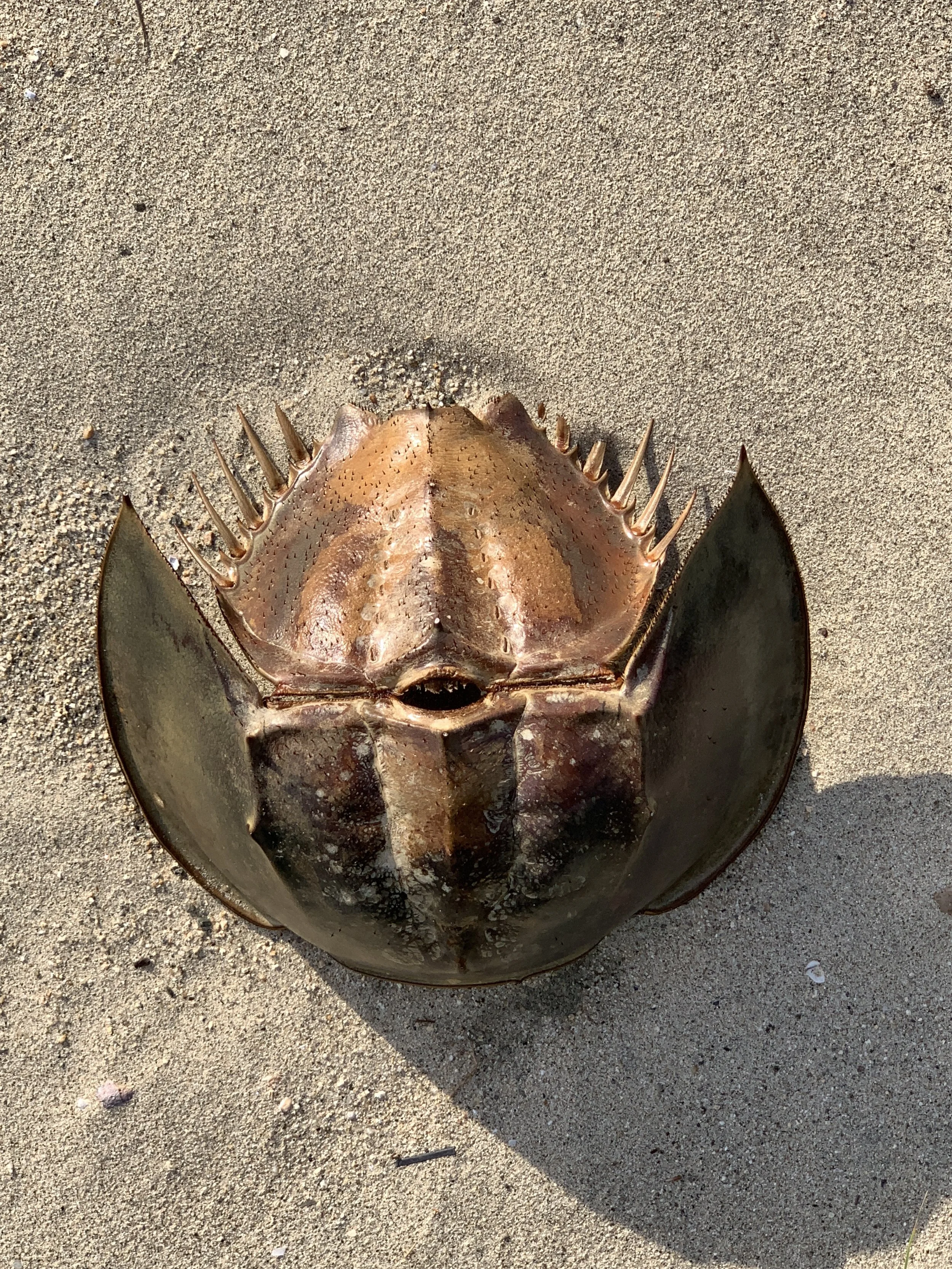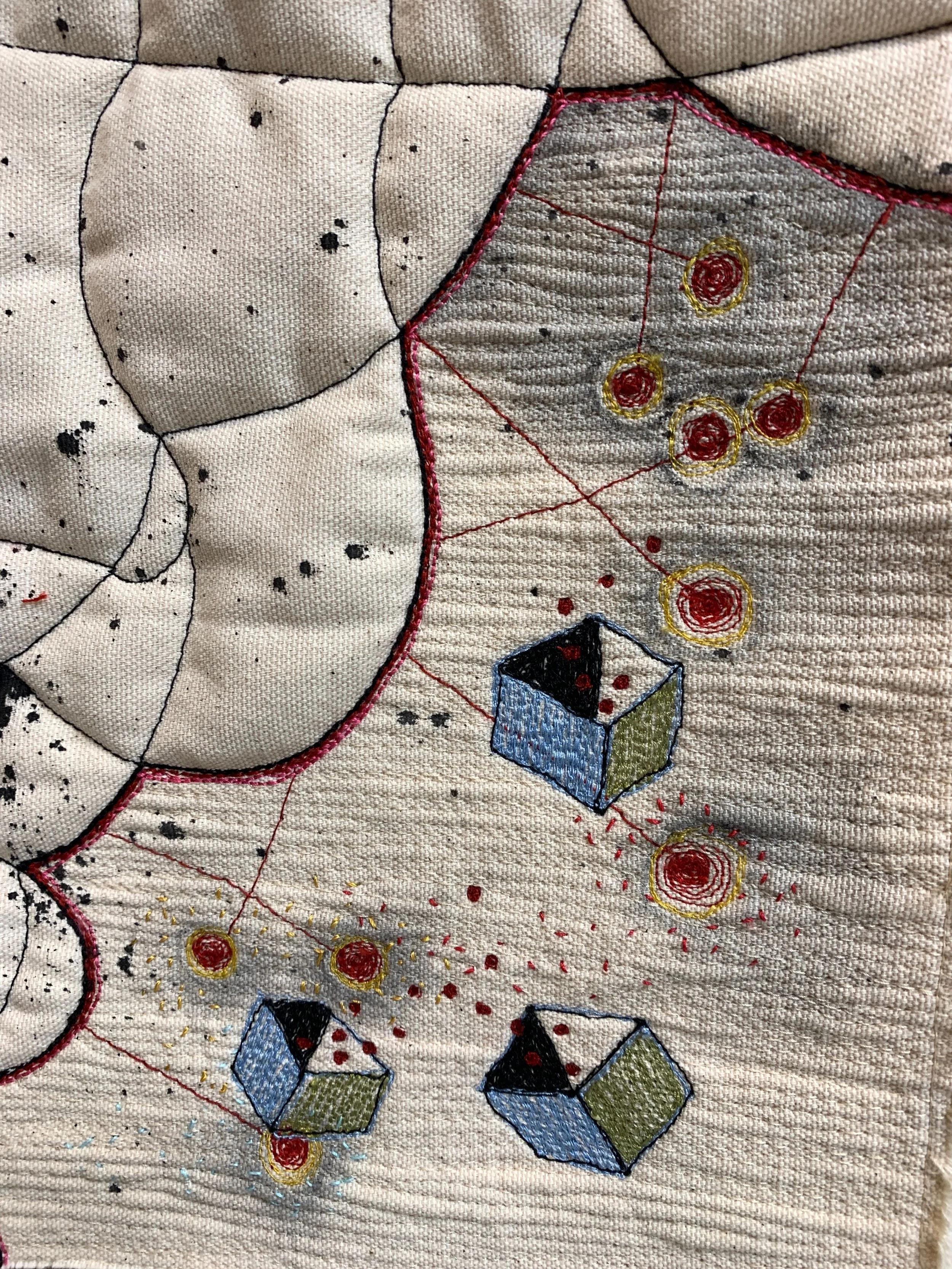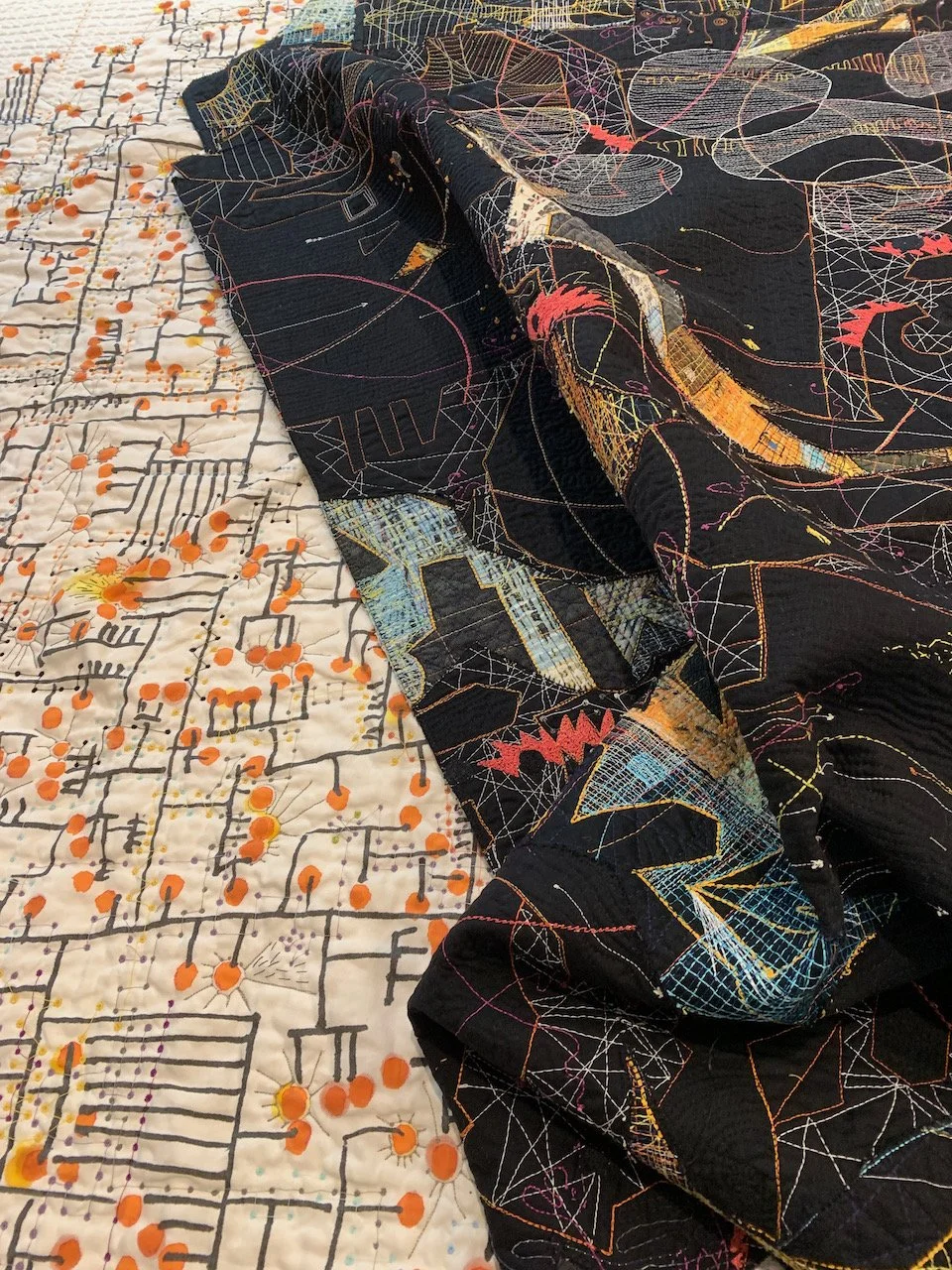Recently I got an email from one of my readers who said that one of her teachers left her with this thought one day:
Disorder is unnamed order.
This might be a perfect time to share a piece that was close to being cut up over the weekend. Luckily for me I shared it with a friend who said it just needed more thought. She couldn't put a name to it but had a number of comments that showed me how she perceived the piece. And, our conversation about it gave me new perspective on how I might proceed. You might recognize the piece from previous posts. It is a flag made with scraps and scrapings from the studio. A study of immigration, assembly and union.
Adding more stitching created a bumpy topography that bordered on chaos.
There's movement alright, a rippling and straining that only bias stitching can create.
Trouble was, I had this brilliant idea that if I stitched a radiating line out from each of the hand applied stars in the composition it would add movement and convey the coming together of the states.
But, without a good substrate to bolster the bias stitching the flag waves and wanders over the table as if in animated agony. Bubbles, bulges and pits are not a pretty thing.
Going back to my original intention for the piece -- a study of immigration and union -- conflict and resolution -- life stories and belonging, I realized that bulges and bubbles may be just what it needs. Our nation is a compilation of histories. The disorder is resolved by naming the injustices, applying the rule of law and coming together in harmony.
So for now I am adding more stitching. Journeys of thread texture, gatherings of thread colonies and backbones of thread tracks. I am adding order to disorder and naming it This Imperfect Union.
This may take awhile.





